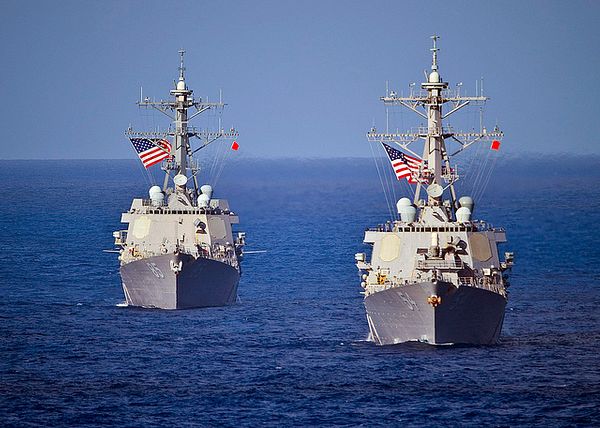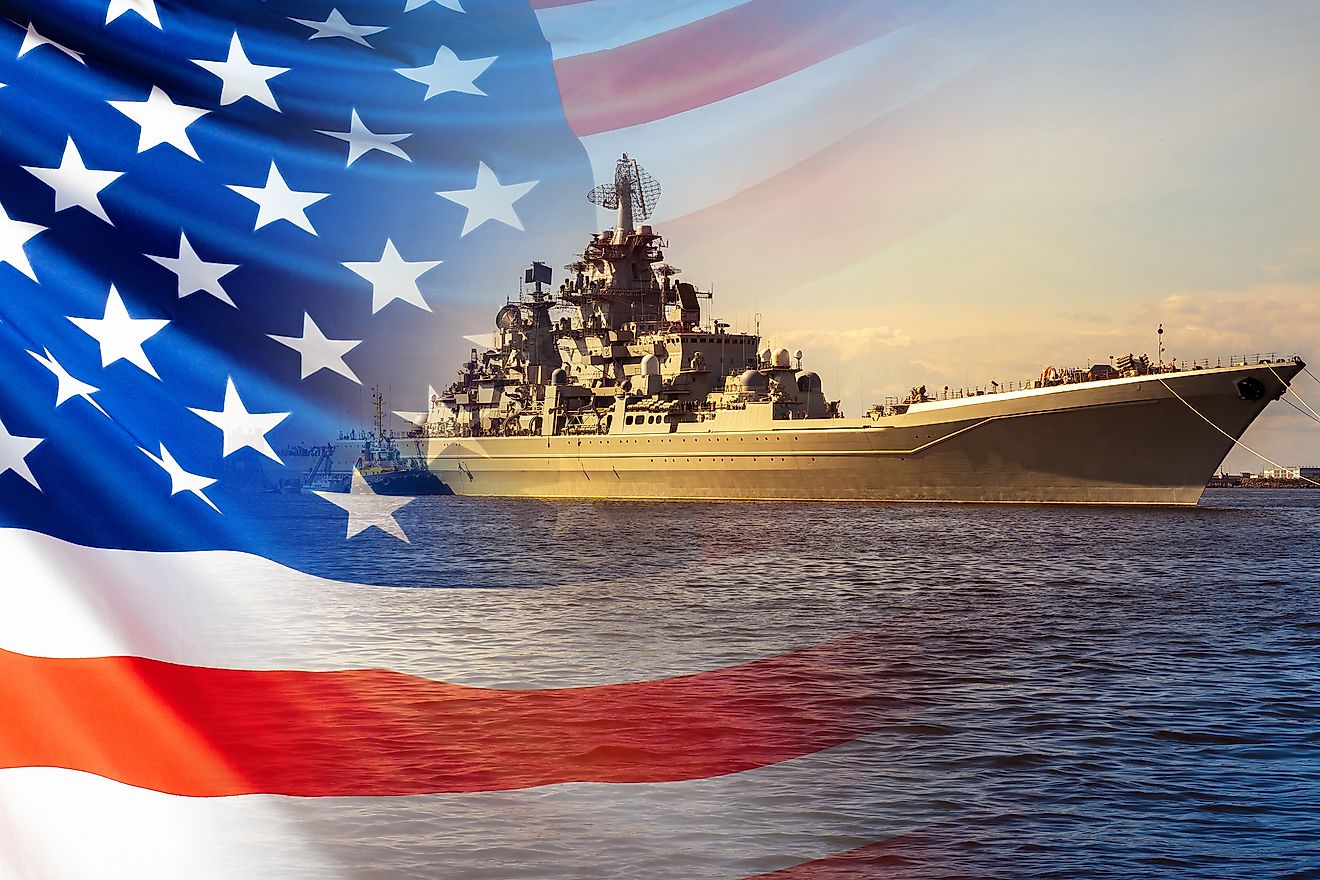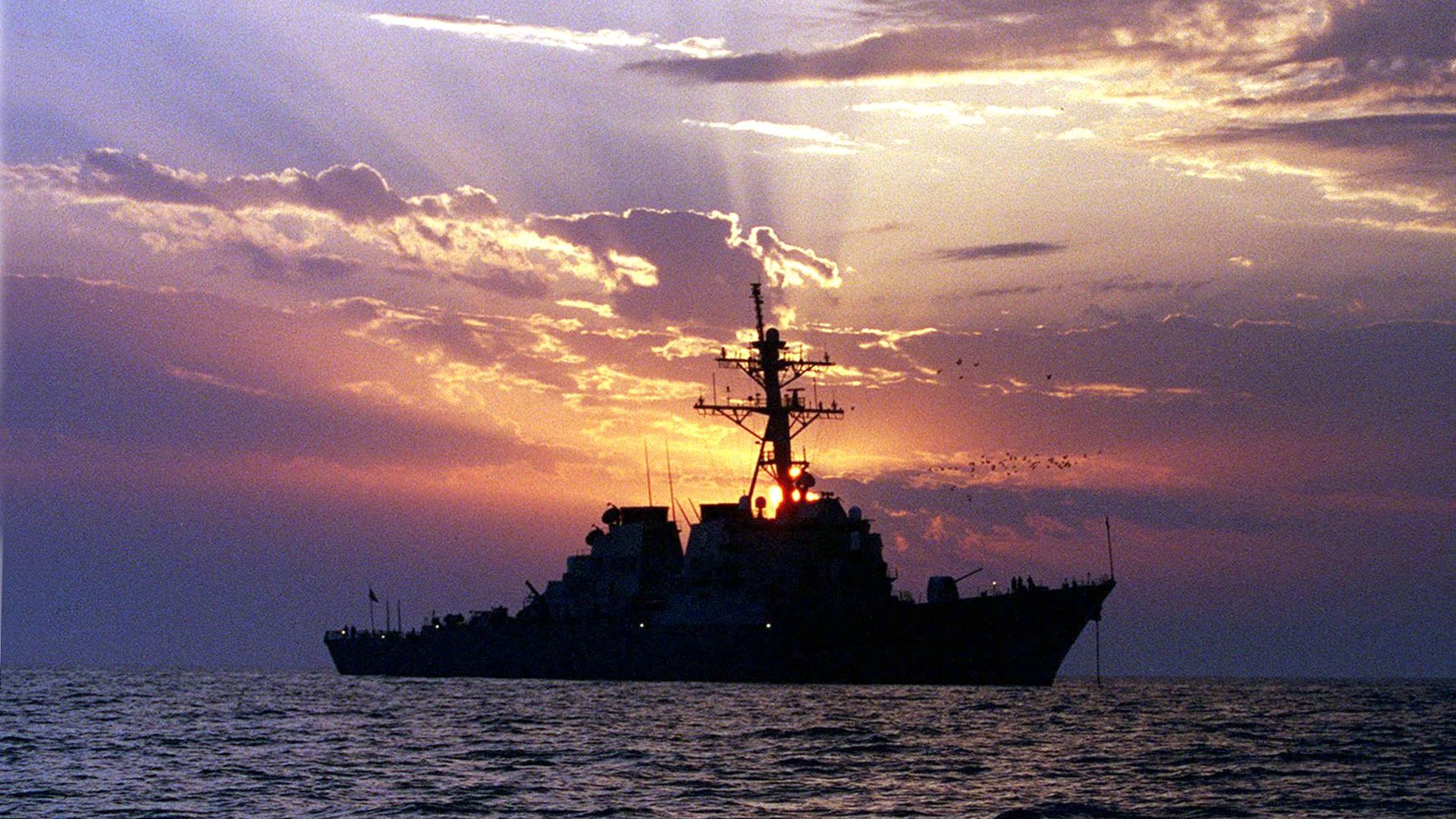Rising Tensions And Geopolitical Turbulence Over Maritime Territories; American War Ship And Commercial Ships Attacked In Red Sea, China Accuses US Entry In South China Sea, Why Maritime Borders Have Become So Crucial
Tensions in the South China Sea have once again flared as China's military accuses the United States of unauthorised entry into disputed territorial waters. According to Chinese authorities, the focal point of this latest dispute is the Second Thomas Shoal, a contested atoll where a US Navy ship allegedly breached maritime boundaries. The incident is the latest in a series of maritime confrontations, reflecting the broader territorial disputes in the South China Sea. Meanwhile, an American warship and several commercial vessels encountered an attack in the Red Sea on Sunday, according to the Pentagon. Major powers are fortifying their maritime capabilities (territories) and vying for influence and control; the significance of ocean borders and military dominance at sea is becoming more pronounced internationally.

Geopolitical Turbulence Over Maritime Territories
China’s military asserted on Monday that a US Navy ship had unlawfully entered the waters adjacent to the Second Thomas Shoal, an atoll in the disputed South China Sea that has recently witnessed multiple maritime confrontations.
The spokesperson for China’s Southern Theater of Operations stated that the US had significantly disrupted regional peace and stability, accusing it of violating China’s sovereignty and causing disturbance in the South China Sea.
The US Navy countered these allegations, stating that the USS Gabrielle Giffords, an Independence-class littoral combat ship, was engaged in routine operations within international waters in the South China Sea, adhering to international law and noting its commitment to maintaining a free and open Indo-Pacific region through regular operations in the South China Sea.

Over recent months, China has experienced tensions with Philippine vessels, while expressing discontent about US naval presence in disputed areas.
The Chinese military identified the contested area as the Renai Reef, also known as Second Thomas Shoal, a part of the Spratly Islands within the Philippines’ exclusive economic zone, as determined by a United Nations tribunal ruling in 2016. China’s military spokesperson affirmed that their forces were on high alert to defend national sovereignty.
In response, the US Navy reiterated its dedication to working alongside allies and partners in support of a free and open Indo-Pacific; meanwhile, the Philippine Coast Guard deployed vessels in the South China Sea, responding to an increase in Chinese maritime militia vessels within the country’s exclusive economic zone.
The People’s Liberation Army Southern Theater revealed that a Chinese naval force was mobilised to monitor and track the USS Gabrielle Giffords during the operation.
The Philippines, facing challenges against China’s military strength, has sought support from the US, expanding military cooperation and conducting joint patrols.
China accused the US of meddling in waters distant from its shores and reiterated its claim that the US is the primary source of regional tensions. Amid China’s expansive claims in the South China Sea, the US Navy’s operations near Second Thomas Shoal have intensified geopolitical tensions, with both nations asserting conflicting narratives regarding sovereignty and regional stability.

US Warship And Commercial Vessels Attacked
In another incident, the Pentagon confirmed that an American warship and multiple commercial ships were subjected to an attack in the Red Sea on Sunday.
Yemen’s Houthi rebels later claimed responsibility for the attacks on two ships they associated with Israel; however, they did not acknowledge targeting a US Navy vessel.
Still, the incident potentially marks a significant escalation in the ongoing series of maritime attacks in the Middle East related to the Israel-Hamas conflict.
The USS Carney, an Arleigh Burke-class destroyer, was among the vessels attacked; the British military reported a suspected drone attack and explosions in the Red Sea without providing further details.
The Pentagon stated it was aware of the reported attacks and would share information as it becomes available, and although the Pentagon did not identify the source of the attack, Houthi military spokesman Brig. Gen. Yahya Saree claimed responsibility.
According to Saree, a missile hit the first vessel, and the second was targeted by a drone in the Bab el-Mandeb Strait, connecting the Red Sea to the Gulf of Aden, but as stated above, there was no mention of a US warship involvement in the Houthi statement.
The Brig further asserted that the attacks would persist as long as Israel continued its conflict with Hamas in the Gaza Strip, with reports indicating that the Houthis have been launching a series of attacks on vessels in the Red Sea, along with deploying drones and missiles targeting Israel amid the ongoing war.
Speaking anonymously about intelligence matters, a US Official disclosed that the attack began around 10 a.m. in Sanaa, Yemen, and lasted for approximately five hours. Another US official, also speaking anonymously, mentioned that the USS Carney intercepted at least one drone during the attack.
The incident is indicative of the increasing targeting of global shipping as the Israel-Hamas conflict poses the risk of evolving into a broader regional confrontation. Although there was a temporary truce, the collapse of the ceasefire and the resumption of Israeli airstrikes and a ground offensive have heightened the possibility of renewed seaborne attacks.

The Growing Importance Of Maritime Borders
The recent attack on an American warship and commercial vessels in the Red Sea adds to the growing concern surrounding global military escalations in maritime territories.
This incident, although linked to the ongoing Israel-Hamas conflict, is just one example of the increasing geopolitical tensions manifesting in crucial waterways. As nations vie for influence and control, the significance of ocean borders and military dominance at sea is becoming more pronounced internationally.
Maritime security has become a focal point as nations worldwide assert their interests in key strategic water bodies; the South China Sea, for instance, has witnessed heightened tensions due to territorial disputes involving China and its neighbouring countries.
The Red Sea, a vital shipping route connecting the Mediterranean Sea to the Indian Ocean, has now become another hotspot, emphasising the geopolitical implications of military activities in these critical waters.
The global increase in military escalations at sea is indicative of a shifting paradigm where oceans are not merely expanses of water but arenas of geopolitical manoeuvring, and control over maritime territories is seen as essential for securing trade routes, asserting territorial claims, and projecting military power.

Vying For Strategic And Economic Control
The importance of ocean borders has grown as nations recognise the economic and strategic value of controlling maritime territories – beyond facilitating trade and commerce, oceans offer access to valuable resources, including energy reserves and fisheries.
Further, the ability to control sea routes has significant implications for military mobility and power projection.
In the context of escalating military activities in maritime regions, major powers in the Asia-Pacific, including Japan, Australia, the Philippines, and others, find themselves in a complex geopolitical tie marked by tensions with China.
These nations are caught in a delicate balance between safeguarding their interests, asserting territorial claims, and managing relations with an increasingly assertive China.
Japan, with a history of maritime disputes with China over the East China Sea, has been strengthening its maritime capabilities and alliances.
The strategic importance of the East China Sea, particularly the Senkaku Islands, has led Japan to bolster its maritime defenses and engage in joint military exercises with allies like the United States.

Similarly, Australia, positioned in the Indo-Pacific region, has witnessed a growing concern over China’s expanding influence.
The South China Sea disputes have heightened Australia’s focus on maritime security, leading to increased defense investments and partnerships with regional allies. Australia’s involvement in joint military exercises, coupled with diplomatic efforts, reflects a proactive approach to safeguarding its maritime interests in the Indo-Pacific region.
The Philippines, entangled in territorial disputes with China over the South China Sea, has faced challenges in balancing its economic ties with China and safeguarding its sovereignty.
Despite legal victories at the Permanent Court of Arbitration in 2016, the Philippines has encountered continued assertiveness from China and sought alliances with other regional powers, including the United States, to counterbalance China’s maritime influence.
China, A Common Enemy
China’s expansive South China Sea claims have increased tensions, prompting regional powers to reassess their military strategies and alliances.
Major powers in the Asia-Pacific region, including Japan, Australia, and the Philippines, are actively responding to the challenges posed by China’s assertive maritime policies.




